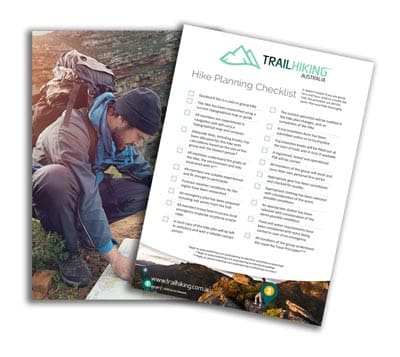Burnside Walks - A - Toll Gate Circuit is a 1.9km, grade 1 hike located in Mount Osmond Reserve, South Australia. The hike should take around 45 minutes to complete.
Hike overview
A short loop past the Glen Osmond mine chimney, through Danthonia Reserve, looping back through a forested valley and along Gill Terrace. The hike begins in the carpark adjacent the former mine's adit (tunnel). The stone chimney further up the hill in Danthonia Reserve is the flue for a smelter that was located north of the adit.
Be careful of cars when walking along Gill Terrace, as there is no footpath for most of the road.
This walking trail is part of the Burnside Walks network, a series of trails around the hills on the edge of the City of Burnside, and in Mount Osmond Reserve. The trails are all well marked, with regular signs and numbered checkpoints that correspond to the excellent walking map.
Parking is available at the carpark on the corner of Gill Terrace and the South Eastern Freeway (near the Old Tollgate), and at places marked with a P on the Burnside Walks Brochure.
This hike can be accessed by Adelaide Metro bus, via Bus Stop 14 Mount Barker Road, Glen Osmond.
Route and GPX file
Max elevation: 293 m
Min elevation: 162 m
Total climbing: 144 m
Total descent: -144 m
For more information on this hiking trail, please visit Walking SA
Trail location
Sorry, no records were found. Please adjust your search criteria and try again.
Sorry, unable to load the Maps API.
Getting there
Parking is available at the carpark on the corner of Gill Terrace and the South Eastern Freeway (near the Old Tollgate), and at places marked with a P on the Burnside Walks Brochure.
This hike can be accessed by Adelaide Metro bus, via Bus Stop 14 Mount Barker Road, Glen Osmond.
GPX file courtesy of Walking SA. File may not contain elevation data and may only represent half the length on return hikes.
Gallery
If you have any photos from this hike and are happy to share them, please upload your .jpg files here.
Please note: Uploading photos does not transfer ownership of copyright away from you. If requested, you will be credited for any photos you provide and can ask they be deleted at any time.
About the region
Mount Osmond is a small suburb of 2,497 people in the South Australian capital city of Adelaide. The suburb is at a high elevation in the Mount Lofty Ranges, and provides views over Adelaide as well as containing a renowned golf course and country club. Mining operations in the 19th century gave the area notoriety, but it has since developed slowly into a small, quiet and secluded suburb.
Similar trails nearby
Explore Safe
While planning your hike, it’s important to check official government sources for updated information, temporary closures and trail access requirements. Before hitting the trail, check local weather and bushfire advice for planned burns and bushfire warnings and let someone know before you go. Plan ahead and hike safely.
Let someone know
Adventure with peace of mind: Fill out your trip intentions form. Before you hit the trail, fill out an online form to privately send important details about your hike to your family or friends. If you don’t return on time, they can easily alert emergency services, preventing worry and ensuring a swift response. Hike with peace of mind and enjoy your outdoor adventure to the fullest. Be smart, be safe: Register your plans here.
Gear to consider

My free planning, food and packing checklists provide an introduction to things your could consider (as well as the Ten Essentials) on your day, overnight and multi-day adventures. Customise your kit according to your personal needs, always considering safety first.
Suggest an edit
Does this hikes information need updating? Sometimes the route, trail features or access conditions change.
Acknowledgement of Country
Trail Hiking Australia acknowledges the Traditional Owners of the lands on which we hike and pay respects to their Elders, past and present, and we acknowledge the First Nations people of other communities who may be here today.
















